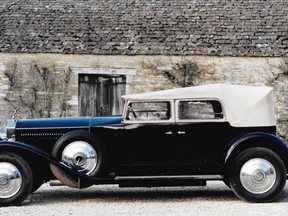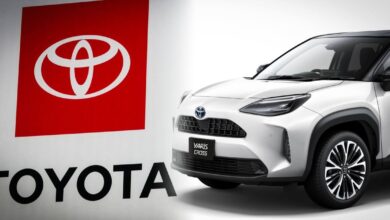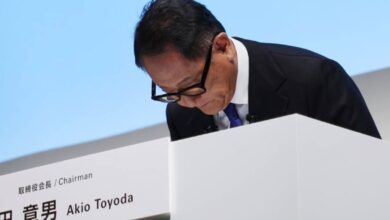Igniting the Automobile: ‘Take the best that exists and make it better’

Article content
Luxurious, substantial, reliable Rolls-Royce built a reputation for producing vehicles and engines of excellence. Living in different segments of society, Charles Rolls and Henry Royce were introduced by an acquaintance who saw possibilities in their shared interests. The meeting of Rolls and Royce in 1904 launched an industry giant.
Advertisement 2
Article content
In the village of Alwalton, Cambridgeshire, England, Henry Royce was born in 1863, the youngest child of James and Mary Royce. Operating a leased flour mill, the parents struggled to make a living and moved the family to the bustling city of London.
Article content
The family’s struggles had only begun — James Royce died when Henry was nine years old. The boy “had to work to contribute to his family’s income by selling newspapers and delivering telegrams,” said the Rolls Royce and Bentley firm. “By the time he turned 15 years, he had completed only one year of school.”
Royce’s aunt came to the rescue with financial support, and he received an apprenticeship at Great Northern Railway in Peterborough, England. Working with professional engineers, “Royce took every opportunity to educate himself, spending his evenings studying algebra, French and electrical engineering,” according to Rolls-Royce Motor Cars (RRMC) in “How Rolls Met Royce.” The teenager developed a talent for engineering. Three years later, he left for work with Electric Light and Power Company in London, and in 1882, transferred to Liverpool with the same company.
Advertisement 3
Article content
Partnering with Ernest Claremont, Royce started Royce Ltd., “to make electrical components such as doorbells and dynamos,” said RRMC. At that time, “Royce patented improvements to the bayonet light bulb that are still in use today.” (A dynamo is an electrical generator.) Purchasing his first car, Royce meticulously examined the two-cylinder French Decauville vehicle and determined that he could do better.
During 1903, Royce designed and built his own engine, “and in April 1904, he drove his first Royce 10-horsepower motor car into town.” Royce’s ideas were part of his lifelong philosophy: “Take the best that exists and make it better.”
At the same time, another man was also dreaming of automobiles. Born in 1877 in London, Charles Stewart Rolls was the youngest child of High Sheriff John Allen Rolls and his wife, Georgiana. (The senior Rolls later became 1st Baron Llangattock, part of British aristocracy.) Higher education was readily available, and Rolls’ interest in engineering was fuelled at Eton College.
Advertisement 4
Article content
“While still at Eton, he installed a dynamo at the Hendre and wired part of the house for electricity,” wrote Peter Pugh in “The Magic of a Name: The First Forty Years of Britain’s Most Prestigious Companies” (Icon Books, Ltd., London 2000). Enrolling at Trinity College in Cambridge, Rolls studied applied mechanics. A bicycle racer, “his enthusiasm for individualism, science and speed was satisfied for the moment by the bicycle and speed.” That speed piqued Rolls’ delight in automobiles.
When he was 18 years old, Rolls was one of the first customers to buy a Peugeot Phaeton automobile in Paris, France. Graduating in 1898 with a degree in mechanism and applied science, Rolls worked for several employers before opening his own workshop in 1899 with milling and drilling equipment. Instead of mechanical work, he was drawn to sales, and “with financial support of his father, he opened one of the first car dealerships in Britain in 1903,” said Rolls Royce and Bentley. Rolls sold cars imported from France and Belgium.
Advertisement 5
Article content
The business owner’s attention turned from automobiles to aeronautics. In 1903, Rolls “helped create the Royal Aero Club and became the second person to gain the licence to fly from the club.” The new pilot “was also a balloonist and made more than 170 ascents with a balloon.”
Meanwhile, Royce established a reputation as quality manufacturer of dynamos, electric motors and electric cranes. A director in Royce’s company, Henry Edmunds, was also an automobile aficionado … and acquainted with Charles Rolls. Watching Royce build prototype vehicles, Edmunds was impressed. The first 10-hp car passed tests and trials, successfully running 233 kilometres from London to Margate and back on April 18, 1904. Edmunds kept Rolls apprised of developments. At last, Royce and Rolls met in Manchester on May 4, 1904. The entrepreneurs discussed vehicles and business.
Advertisement 6
Article content
Negotiating throughout the year, an agreement was proclaimed on Dec. 23, setting the groundwork for the Rolls-Royce brand. “In the agreement, Rolls contracted to take all the cars built by Royce Ltd., who agreed to delivery a range of two-, three-, four- and six-cylinder chassis rated between 10 and 30 hp,” stated Pugh.
At Rolls’ dealership, the 10-hp two-cylinder Rolls-Royce vehicle sold at that time for £395, and the 20-hp six-cylinder sold for £650, according to Pugh. The Rolls dealership continued to offer other brands.
Incorporated on March 15, 1906, Rolls-Royce Limited purchasing nearly 13 acres at Derby, northwest of London for factory expansion. As plant construction got underway, Royce took ill and there were worries he would not survive. Working full out for years and neglecting to eat regularly affected his health. Royce spent time in warmer areas of Egypt and France to recuperate. He may have been away from day-to-day aggravations, but his mind still whirred, designing vehicles and bringing his top engineers to his home to discuss plans.
Advertisement 7
Article content
That same year, Rolls sailed to the United States on a Rolls-Royce promotional trip and to see the powered flying machines devised by the Wright Brothers. Rolls adored flying. In 1909, he purchased a Wright Flyer biplane, “with which he made 200 flights,” said Rolls-Royce Bentley.
Achieving status as the first person to cross the English Channel in an airplane, Rolls received the gold medal from the Royal Aero Club. Only a month later on July 12, 1910, 32-year-old Rolls “was killed in an air crash during a flying display at Bournemouth, becoming the first Briton to die in a plane crash.” Charles Rolls was gone but his name lived on.
Moving ahead without Rolls, the company focused on manufacturing the Silver Ghost, a six-cylinder beauty first introduced in 1906. Over 20 years, the factory produced 6,000 of the famous vehicles. Their next sleek design was the Phantom, which debuted in 1925. Expanding their footprint in luxury automobile manufacturing, Rolls-Royce purchased Bentley Motors Limited in 1931.
Advertisement 8
Article content
Business was interrupted when the two world wars called, demanding different equipment — it was the type that would have thrilled the late Rolls, with airplanes and fighter jets. Designing aero engines during the First World War with his engineers, Royce was knighted in 1918, and made Baronet of Seaton for his aviation work in 1930. The devoted manufacturer did not live to see his firm’s dynamic contributions during the Second World War. Sir Henry Royce died on April 22, 1933, at age 70 after a long illness.
Rolls-Royce factories operate in 50 countries around the world. In 1947, Rolls-Royce Canada Ltd. opened an aviation plant in Montreal. Developing sustainable, low-emissions engines, one of the firm’s latest inventions was the Spirit of Innovation aircraft. Breaking previous electric engine speed records, the machine is “not only the fastest electric aircraft in history but the fastest electric vehicle of any type,” stated D.F. McCourt in “How Montreal Keeps the World Flying: 75 Years of Rolls-Royce Canada Aerospace,” Innovating Canada, 2022. Rolls-Royce expanded its facilities in Peterborough in 2020 as part of the Global Combat Ship program.
Autos to aeros, and later marine, Rolls-Royce founders pioneered machines that sparked today’s groundbreaking innovations.
Susanna McLeod is a writer living in Kingston.
Article content



